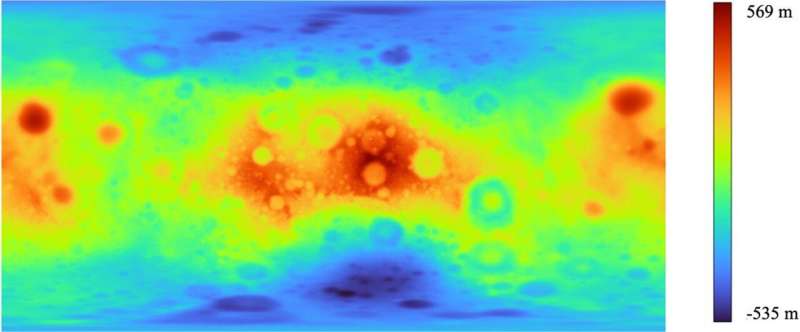An 800-year-old mathematical trick could help with lunar navigation

Kamilla Cziráki, a geophysics student at the Faculty of Science of Eötvös Loránd University (ELTE), has taken a new approach to researching the navigation systems that can be used on the surface of the moon to plan future journeys.
Working with Professor Gábor Timár, head of the Department of Geophysics and Space Sciences, Cziráki calculated the parameters used in the Earth’s GPS system for the moon using the method of mathematician Fibonacci, who lived 800 years ago. Their findings have been published in the journal Acta Geodaetica et Geophysica.
Now, as humanity prepares to return to the moon after half a century, the focus is on possible methods of lunar navigation. It seems likely that the modern successors to the lunar vehicles of the Apollo missions will now be assisted by some form of satellite navigation, similar to the GPS system on Earth. In the case of Earth, these systems do not take into account the actual shape of our planet, the geoid, not even the surface defined by sea level, but a rotating ellipsoid that best fits the geoid.
Its intersection is an ellipse that is furthest from the Earth’s center of mass at the equator and closest to it at the poles. The radius of the Earth is just under 6,400 kilometers, and the poles are about 21.5 kilometers closer to the center than the equator.
Why is the shape of the ellipsoid that best fits the moon interesting, and what parameters can be used to describe it? Why is it interesting that compared to the moon’s mean radius of 1,737 kilometers, its poles are about half a kilometer closer to its center of mass than its equator? If we want to apply the software solutions tried and tested in the GPS system to the moon, we need to specify two numbers, the semi-major and the semi-minor axis of this ellipsoid, so that the programs can be easily transferred from the Earth to the moon.
The moon rotates more slowly, with a rotation period equal to its orbital period around the Earth. This makes the moon more spherical. It is almost a sphere, but not quite. Nevertheless, for the mapping of the moon that has been done so far, it has been sufficient to approximate the shape of a sphere, and those who have been more interested in the shape of our celestial companion have used more complex models.
Interestingly, the approximation of the moon’s shape with a rotating ellipsoid has never been done before. The last time similar calculations were made was in the 1960s by Soviet space scientists, using data from the side of the moon visible from Earth.
Cziráki, a second-year geosciences student specializing in geophysics, worked with her supervisor, Timár, to calculate the parameters of the rotating ellipsoid that best fit the theoretical shape of the moon.
To do this, they used a database of an existing potential surface, called the lunar selenoid, from which they took a height sample at evenly spaced points on the surface and searched for the semi-major and semi-minor axes that best fit a rotating ellipsoid. By gradually increasing the number of sampling points from 100 to 100,000, the values of the two parameters stabilized at 10,000 points.
One of the main steps of the work was to investigate how to arrange N points uniformly on a spherical surface, with several possible solutions; Cziráki and Timár chose the simplest one, the so-called Fibonacci sphere. The corresponding Fibonacci spiral can be implemented with very short and intuitive code, and the foundations of this method were laid by the 800-year-old mathematician Leonardo Fibonacci. The method has also been applied to the Earth as a verification, reconstructing a good approximation of the WGS84 ellipsoid used by GPS.
More information:
Kamilla Cziráki et al, Parameters of the best fitting lunar ellipsoid based on GRAIL’s selenoid model, Acta Geodaetica et Geophysica (2023). DOI: 10.1007/s40328-023-00415-w
Citation:
An 800-year-old mathematical trick could help with lunar navigation (2023, July 25)
retrieved 25 July 2023
from https://phys.org/news/2023-07-year-old-mathematical-lunar.html
This document is subject to copyright. Apart from any fair dealing for the purpose of private study or research, no
part may be reproduced without the written permission. The content is provided for information purposes only.
For all the latest Science News Click Here
For the latest news and updates, follow us on Google News.

